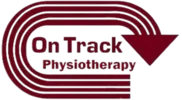Sciatica is a common type of pain which impacts the sciatic nerve as it extends down the leg. It’s a “catch all” term which describes a particular subset of symptoms which includes:
- Low back pain
- Hip pain in the back of the leg which is generally worse during sitting
- Burning or Tingling down the leg
- Weakness or numbness in the foot
- Constant pain in the rear
- Shooting pain down the leg
The problem with the term sciatica is that it actually encompasses many different reason or causes for these particular set of symptoms.
Which is why it is important to establish an assumption of the root cause from where the symptoms originate from in order to effectively treat it. When considering this presentation, the first thing we need to clear is the lower back.
This is a where the sciatic nerve originates and as a result it makes sense to start here because if you miss the low back as a pain contributor, any other treatment you provide will have minimal impact.
Low Back
Is there a directional preference of the spine either bending forward or extending backward?
Are the symptoms provoked or alleviated with either compression (rotating + side bend with possible addition of axial compression) or distraction (rotation + side bend in the opposite direction of symptoms)?
What positions are the symptoms worse in – sitting, standing, or walking?
Is there associated muscle testing weakness of the leg that presents asymmetrically?
What was the mechanism of injury?
These are all important considerations for low back contribution to sciatica symptoms. They also help you understand what movements you currently can perform as well as cannot perform due to pain or symptoms worsening.
Hip
Many people tend to refer to this one as piriformis syndrome. However, the piriformis takes a lot of unnecessary blame. When we consider the hip as a pain contributor it is because it irritates the sciatic nerve. Nerves like 3 things – blood flow, space, and movement.
Think about the last time your arm fell asleep when you had it resting over your head. The arm was on stretch overhead, thus restricting space as well as blood flow and it was not moving. Which is why you started to experience tingling in the hand.
It’s no different than sitting on a hardwood chair for a long period of time. At some point you need to shift PRESSURE to the other butt cheek.
When looking at the hip, we want to see how much range of motion an individual has rotating in all directions at the hip. Before we try to stretch anything, we should consider the total range of motion at the hip. If the client can reach this total range of motion number, then more than likely its not a flexibility issue. More times than not, even though the hip FEELS “tight” you actually have enough joint range of motion.
What you may notice more is that the person has a tendency to utilize one direction of the hip more often (in most cases people will have a lot more external rotation than internal rotation at the hip). If this is the case, then utilizing the muscles which create the opposing direction is often useful to shift PRESSURE somewhere new.
Finally, there is also a certain subset of people who have excessive hip range of motion. In these instances, it appears that the muscles creates protective tension in order to help the joint feel more stable. As a result, the way to decrease the constant resting tension is to actually strengthen the hip musculature in order to provide an improved perception of control.
Sciatic Nerve
Finally we should discuss the nerve itself. After an injury, or if symptoms are experience for a prolonged period of time, the nerve can become highly sensitive/symptomatic to pressure or tension.
At this point in time, neural tensioners/sliders can be a useful mechanism to gradually expose the nerve to tension and compression to create an increased buffer zone from symptoms occurring in the first place.
Summary
Now you understand why it’s so important to clear the back FIRST while simultaneously treating the leg further down the chain. Just because you have pain in your leg does not mean that specific area is the culprit.
If you have specific questions about your issue, feel free to email me at: greg@annarbor.physio
or schedule a discovery visit below where we can talk about this more in person 1 on 1.


